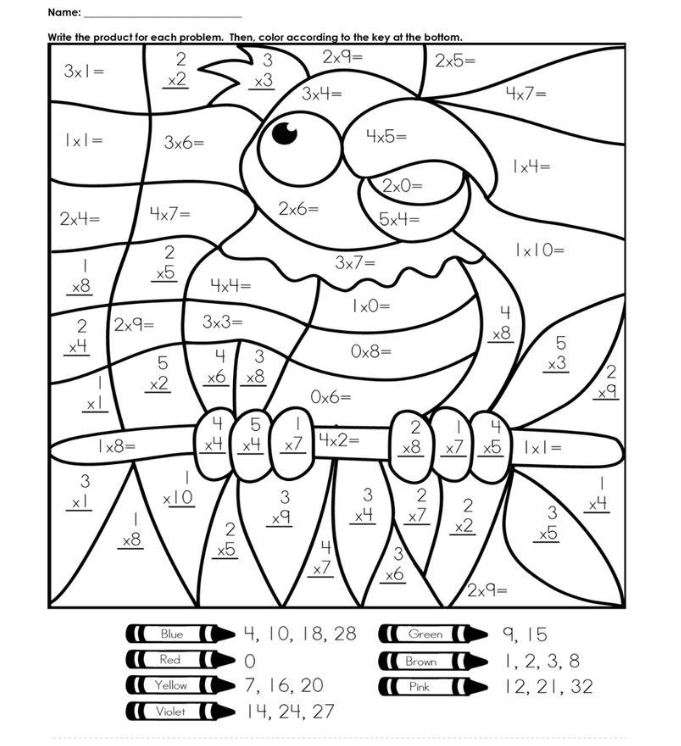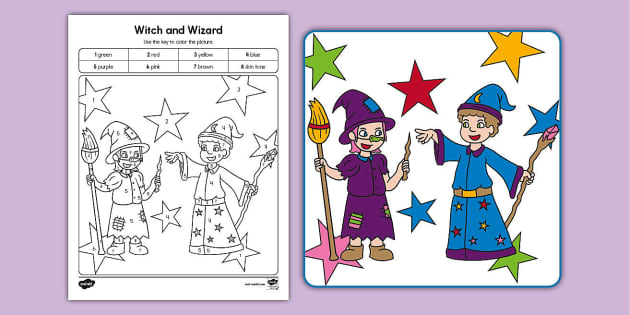Color by Number has long been a favorite activity among children, offering a fun and simple way to engage with colors and numbers. However, by adding a creative twist with puzzles, math, and hidden pictures, this classic activity can be transformed into an even more educational and engaging experience. In this article, we explore how Color by Number activities can evolve with added complexity to foster cognitive skills, boost creativity, and make learning fun!
Understanding Color by Number
Color by Number is a type of coloring activity where each section of an image is assigned a number, and the child must fill in that section with the corresponding color. It’s an easy-to-understand game that helps children develop essential skills like fine motor coordination, color recognition, and number identification.

In addition to its fun aspect, Color by Number offers a structured environment for children to practice their basic math skills, focus, and patience. The process of coloring inside the lines while following the assigned numbers also enhances concentration and attention to detail.
The Twist: Adding Puzzles to Color by Number
While Color by Number itself is an enjoyable activity, adding puzzles into the mix brings a new level of complexity and excitement. In these “puzzle-infused” Color by Number activities, the child must solve a puzzle or riddle to figure out what color goes in each section. These puzzles can range from simple shape and number recognition tasks to more intricate challenges like finding the missing piece of a picture. Example from ColoriageMagique:

For example, a child might be tasked with solving an addition or subtraction problem to determine which color corresponds to a number. Or, they could be presented with a jigsaw-like puzzle where the pieces come together to form the complete picture as they color it.
Benefits of Puzzle Integration:
- Critical Thinking: Encourages children to solve problems before coloring, stimulating their logical reasoning abilities.
- Focus and Patience: Puzzle-solving teaches perseverance and focus.
- Attention to Detail: Children must pay close attention to small details to complete the puzzle and achieve the correct colors.
Adding Math to the Color by Number Concept
One of the most powerful aspects of combining math with Color by Number is that it merges creative expression with essential academic skills. For example, children might solve simple math equations—addition, subtraction, or multiplication—to discover which color corresponds to each section of the image. This method seamlessly integrates learning into a creative activity, allowing kids to practice math without even realizing it.

Imagine a page where the child needs to solve the following:
- Solve 4 + 3 → Color the section with color #7
- Solve 10 – 5 → Color the section with color #5
This is an excellent way to help children learn math facts in a fun and hands-on way. They not only practice their arithmetic skills, but they also get to see the immediate reward of their work: the completed and colorful picture.
Benefits of Math in Color by Number:
- Practical Application of Math: Reinforces math concepts through real-world, creative activities.
- Enhanced Learning: Math problems become more engaging when they’re part of a larger, visually rewarding task.
- Improved Numerical Fluency: Encourages quicker recall of basic math facts.
Hidden Pictures: The Fun Twist in Color by Number
Hidden picture activities are an exciting addition to the Color by Number concept. These puzzles present children with images that are partially hidden or obscured by other elements, requiring the child to find and color the hidden items based on clues or instructions. Image from ColoriageEnfant

For instance, a child might be given a Color by Number worksheet where they must find certain hidden shapes or objects within the larger picture. As they color these hidden objects, they are developing observation skills, improving their ability to focus, and building a sense of achievement as they uncover the secret components of the image.
Benefits of Hidden Pictures:
- Observation Skills: Develops attention to detail and the ability to focus on subtle visual cues.
- Problem-Solving: The challenge of finding hidden elements enhances critical thinking.
- Enhanced Concentration: Hidden pictures require a child to concentrate and think creatively about where the hidden items might be.
How to Create Your Own Color by Number with a Twist
Parents and educators can easily create their own Color by Number pages with puzzles, math, and hidden pictures. There are several tools and platforms available to design custom worksheets that align with your child’s learning goals.
Here’s a simple guide to get started:
- Choose a Theme: Pick an image or theme that your child loves, such as animals, nature, or cartoons.
- Create the Color by Number Grid: Use online templates or graphic design software like Canva to create a numbered grid.
- Add Puzzles or Math Problems: Insert simple math equations or logic puzzles for each numbered section to make the activity interactive.
- Add Hidden Elements: Place hidden objects or patterns in the image that can only be discovered by coloring the sections correctly.
For those who prefer ready-made resources, many educational websites offer downloadable templates that combine coloring with puzzles and math.
Practical Tips for Parents and Educators
Using Color by Number with a Twist in Education:
- Incorporate these activities into a homeschool curriculum or as an enrichment activity in the classroom.
- Use them as fun brain breaks during long study sessions to keep kids engaged.
- Organize group coloring sessions where children can share their puzzles and math solutions.
Balancing Fun and Learning:
- Keep the activities balanced between fun and educational content to ensure kids are enjoying the process while still learning.
- Gradually increase the difficulty level as your child’s skills improve.
By adding puzzles, math, and hidden pictures to the traditional Color by Number activity, you create a powerful learning tool that is both fun and educational. These activities help children develop essential skills like critical thinking, problem-solving, and concentration while allowing them to express their creativity. Whether you’re a parent, educator, or caregiver, incorporating these “twisted” Color by Number activities
